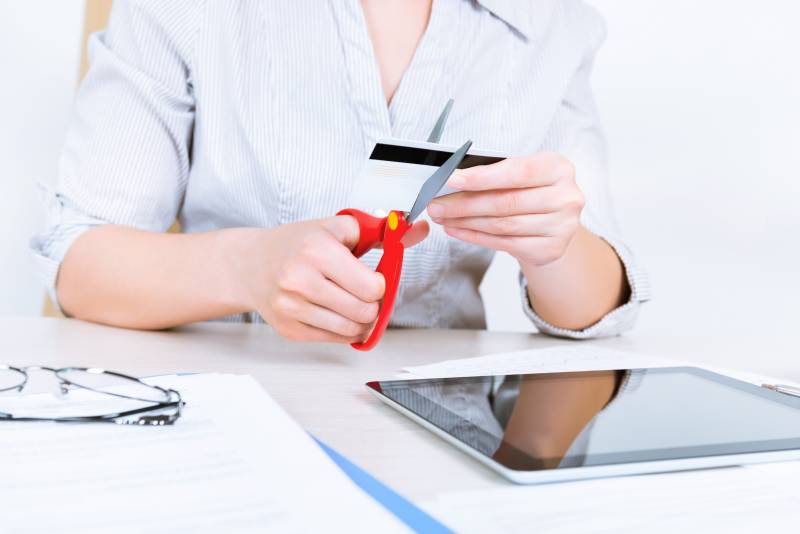8 Ways To Pay Off Debt Faster In 2019

If you’re like the majority of income-earning Canadians, you
resolved to get out of debt and make better financial decisions in 2019. Now
that the year is coming to a close, however, you realize that you haven’t put
so much as a dent in your debt and that you may have made more than a handful
of unnecessary purchases in the past year. While you could opt to just try
again next year, don't give up yet: There are dozens of ways you can pay down
your debt fast and get a fresh start in 2020. Read on for just eight of them.
1. Create a
Budget…
The first thing you need to do is figure out how much you
can realistically put toward your debt each month. In an ideal situation, you
would be able to use the 50/30/20 budget model — put 50% of your income toward
necessities, 30% toward your wants and 20% toward your debt. However, if you
have substantial living expenses, a lot of debt and little after-tax income,
you may have to allocate some of your "want” budget toward your necessities and
debt. Your budget may be more of a 60/10/30 one, or it may not have any room
for wants at all (at least for the time being).
2. ...And
Stick to It
Sticking to a budget is a hard but necessary task for those
with ample debt, as it means going from living beyond one’s means to living
quite frugally. Sticking to your budget and getting your debt to a manageable
level may require reducing unnecessary spending or cutting it out entirely.
What constitutes unnecessary spending? Unfortunately, most
of the fun stuff in life. Think Netflix, visits to the local coffee shop and
nights out, to name a few items.
3. Apply
Your Savings to Your Debt
It may be tempting to put the money you save by foregoing
your gourmet coffees toward your Friday night pizza. Don’t do that. Instead,
keep tally of how much you save each week, either from your efforts to cut back
or coupons. Take those savings and put it toward a debt of your choice. Though
a daily savings of $5 may seem trivial, when you multiply that by seven, that
amounts to $35 a week — more than the average minimum monthly credit card
payment.
4. Freeze
Your Credit Cards
Literally. Put your credit cards in a bag of water and place
them in your freezer. The worst thing you can do when trying to pay down your
debt is amass more of it. Not only will you be able to pay down your debt
faster when you stop swiping, but you also can improve your credit card
utilization rate, which plays a major role in your overall credit score. The
lower your utilization, the less risky you appear to lenders.
5. Use the
Snowball Method
Make a spreadsheet that identifies all your credit cards,
current balances and interest rates. Update the balances with each payment that
you make. Once one debt gets low enough, pay it off outright. Now you have
another $25 to put toward wants, right? While it’s true that you do, you should
put that money toward another debt instead — preferably one with the highest
interest rate. By doing this, you’ll be able to pay off that debt two times
faster. Once you pay off a second debt, triple up on payments on another
high-interest card, or double up on payments on two separate cards. This method
— often called the snowball method — is one of the quickest ways to pay down
balances and free yourself of debt.
6. Take Up a
Side Gig
Another quick way to pay off debt involves paying more.
However, to pay more, you need to make more. In today’s gig economy, it’s easy
to find side jobs both online and offline that offer a nice little profit. Side
jobs can range from website testing to taking online surveys to freelancing.
Determine how much time you can reasonably commit to a side hustle and find one
that pays enough to make the commitment worth it.
7. Reward
Yourself
Debt management may require discipline, but it shouldn’t
control your life. For every $1,000 you pay off, reward yourself by going out
to dinner with friends, buying yourself that (affordable) pair of jeans you’ve
had your eye on or renewing your Hulu subscription for one month. Little
rewards every so often will keep you motivated to stay on a debt-free path.
8. Consider
Taking Out a Personal Loan
If you have a substantial amount of debt with several different lenders, the various interest rates, monthly maintenance fees and late payment fees can add up and make it difficult for you to pay down your debt. If that’s the case, consider taking out a personal loan to pay off all or most of your balances and then make affordable payments to just one lender. Learn more about our personal loans today.
